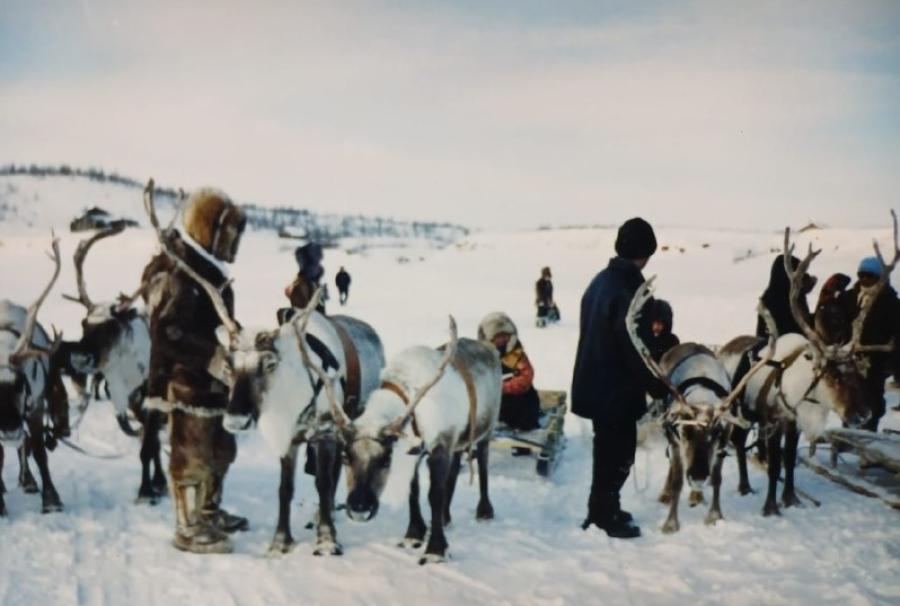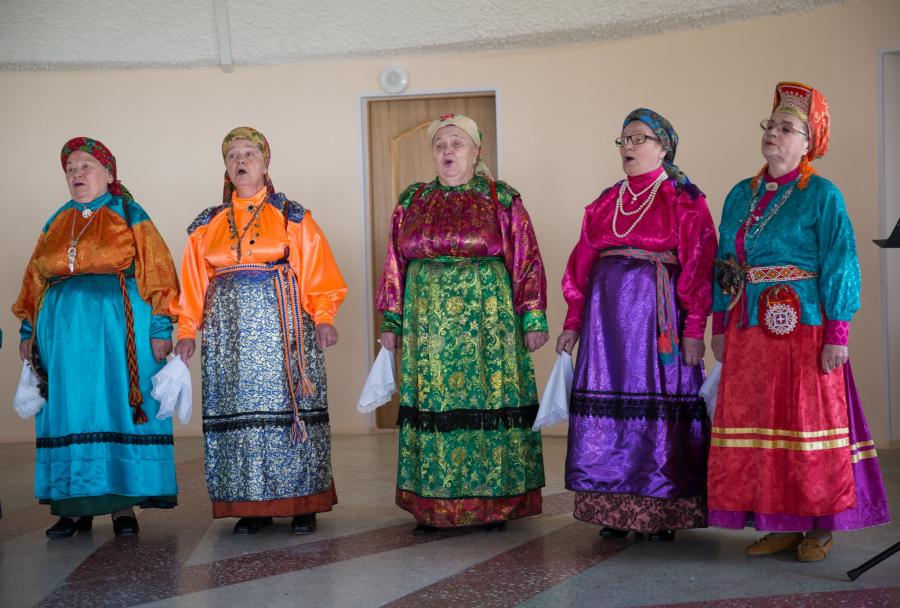To Westerners, the idea of "at home in Sibera" is an oxymoron. To us, Siberia conjures up the image of a barren, frozen land, a land of exile, the Gulag Archipelago. But to a diverse array of indigenous cultures, Siberia is home and has been for millennia.
SUSIE CRATE traveled to remote towns and villages in Siberia in 1989, 1990, and 1991, recording traditional songs, stories, and rituals and photographing and lands, lives, and folklore of indigenous peoples. She is working on a book using this material.
Despite their partial conversion to the Russian Orthodox faith, the Buryats living to the west of Lake Baikal maintain an animistic belief system, with a shaman acting as mediator between the spirit and the earthly world. Traditionally, the shaman's dress was made from animal skins and furs and ornamented with bones, teeth, claws, and metal figures symbolizing the spirit world. This shaman of the 1990s wears Western clothes.
Must indigenous Siberian cultures retain a nature-based belief system recognizing an innate spirit in all things. Rocks, trees, and mountains have "spirit-keepers," and ovas, natural altars built in respect for the local spirit, are common in the Tuvan landscape.
In western Tuva, this woman took me to the ova in a mountain pass outside the village of Teeli and explained the traditional tea ceremony performed there:
"It is necessary to bring tea, always with milk whose whiteness is the symbol of purity. Also bring a cup and a nine-holed spoon - nine is a sacred number. The vertical world consists of three parts: upper, middle, and lower. Three is a sacred number, and three times three is also. Trees exist in all three worlds, branches in the upper, trunk in the middle, and rots in the lower. Trees are sacred and that is why you often find ribbons and strips of cloth tied on a tree near the ova.
"The prayer is known as wish for happiness. `You say it in the morning with your face to the morning with your face to the east while finding the tea with the nine-holed spoon. the prayer is to the spirit to take the tea and to let all people live on the earth, let there not be unhappiness or bitterness, let all people and animals who live have a positive day.
"On the highest place in the mountain, where travelers pass, it is also important to stop at the ova and ask the spirit for help in your journey and also to give something - some coins or candy - and to build up the ova if the rocks are falling away."
These days the traditional dress of the Buryat peoples is rarely seen outside museums. Matryona Khandikhanovna Khantaeva proudly wears her Buryat national costume, which is made according to the traditional style but with synthetic fabrics. Founder and director of the Nagilik regional museum, she is dedicated to teaching children traditional Buryat folklore. Her five-year-old grandson, Valeri Ruslanovich Khantaev, speaks the local Buryat dialect and can recite his ancestry going back 15 generations.
Several hundred years ago, the Buryat living in what became the Buryat Autonomous Republic and in the Aginsk district about 300 miles to the southeast adopted Lamaism. In the regional center of Aginsk is one of three remaining Buddist monasteries in the former Soviet Union; there were over 40 prior to the 1930s. It is a working monastery, and prayer services occur on a daily basis.
Most Evenk live in the taiga areas of Siberia. At one time, they were the major peoples inhabiting the Lake Baikal region.
In the summer of 1990, I visited Kholodnaya, an Evenk village on Lake Baikal's northern shore to record their traditional folklore. However, people were reluctant not only to sing for me but even to discuss their ethnic heritage. Later, I learned that the Baikal Evenk are spiteful toward the Russians and Buryats, who have essentially taken over their ancestral hunting and fishing lands around Baikal.
Article copyright Cultural Survival, Inc.



